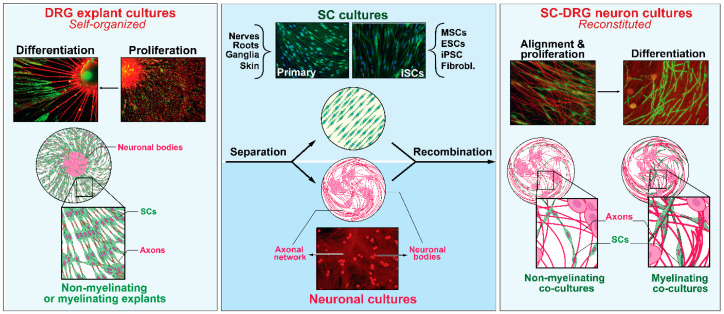Figure 2.
The plasticity of SCs in vitro: deconstruction and reconstitution of neural systems. Explant cultures of sensory (DRG) ganglia (left) are complex self-assembled culture systems that rely on the natural regenerative ability of sensory neurons to extend neurites on a two-dimensional substrate while concomitantly endowing endogenous SCs with an opportunity to engage, proliferate and differentiate as it occurs during developmental nerve growth and maturation (left panel). The neural and SC components from the ganglia itself or other sources (e.g., nerves, roots, and stem cells) can be recombined to create a simpler cellular system supportive of SC–axon engagement and maturation (right panel). Further descriptions can be found in the text along with pertinent references. SC cultures and DRG neurons from rats (primary) were prepared as described in [47]. Differentiation protocols and analysis of myelinating cells were described in [48]. The image of iSCs was kindly provided by Dr. Yong Jun Kim [49].

